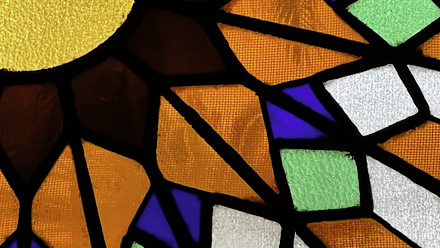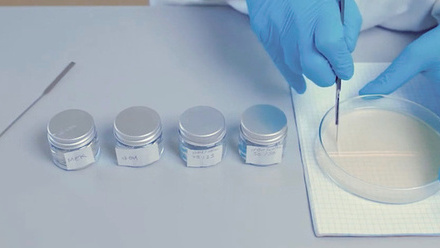The Icon Book and Paper Group Graduate Symposium is a conference-style event which aims to highlight and celebrate the dissertations of Book and Paper Conservation professionals newly graduated from their formal education.
We hope that this event will not only demonstrate the commendable work and high level of research that students put into their dissertation projects, but like our other conferences meaningfully contribute to the existing body of knowledge in our field with insightful inquiries. The symposium will be held annually in spring and autumn, so there will be plenty of opportunities to get involved.
We are delighted to announce the following Agenda (Abstracts & bios below):
- The (im)permanence of fading smoke: A conservation case study of Diane Victor’s soot drawings.
Laura Esser, University of Pretoria - Research on the aging and removal properties of seaweed adhesive "Shi Hua Cai" applied to traditional Asian mounting
Chan Sui Ying Zaffer, Tainan National University of the Arts - Getting a grip on Delaware solutions in agarose: a literature review of chelators in rigid gel for paper conservation treatments
Elizabeth Gralton, University of Melbourne - The Identification and Conservation of Blood on Paper
Heidi Forsyth, Northumbria University
The (im)permanence of fading smoke: A conservation case study of Diane Victor’s soot drawings.
Even though soot has been used for thousands of years, it is relatively unexplored as a medium in contemporary art. Only a handful of artists internationally have created works from soot. The South African artist Diane Victor is one such artist who has explored the medium,using candles to create magnificent artworks on paper, and more recently on stone and glass. The main focus of this mini-dissertation is a detailed artist interview that records Diane Victor’s technique, material use and preferences regarding transport, installation and exhibition of her soot drawings. More importantly, the artist’s interview explores the artist's intent regarding the stability and longevity of her soot drawings, as Diane Victor does not use fixatives on her soot drawings. This preference imparts a certain fragility to the artworks placing them at risk of smudging, lifting of pigment and abrasion, in addition to tears, staining and distortion of the paper through improper handling, poor exhibition techniques or accidental events. Although Diane Victor has returned to and reworked drawings she has made in the past to repair damage to the image, she would instead leave damage to the paper substrate to the expertise of conservators, and there is as such a need to better understand her preferences in addition to the material itself. The artist interview attends to the former, whilst a detailed visual documentation of soot drawings samples attends to the latter. Using various lighting techniques and microscopy, the dissertation hopes to highlight the relationship between the paper fibres and the soot; to establish a baseline for future research into how these fragile artworks could be stabilised and conserved.
Laura Esser is a 26-year-old Masters graduate from the University of Pretoria, South Africa. She studied Tangible Heritage Conservation, focussing especially on book and paper conservation. Laura is very passionate about research and documentation objects. Her goal is to work in an institution where she can combine her love for conservation and research.
Research on the aging and removal properties of seaweed adhesive "Shi Hua Cai" applied to traditional Asian mounting
“Shi Hua Cai” is a seaweed used as adhesive for traditional mounting in Hong Kong SAR and the Guangdong Province, China. It is a natural polysaccharide derived from Florideophyceae as plant-based adhesives. Due to inadequate scientific basis and uncertain species definition found in traditional literature, part of this research attempt the genus identification through literature review, gelling property, and physical appearance. The impact of “Shi Hua Cai” paste on the paper support’s color and folding endurance were examined after accelerated aging, the changes in viscosity and pH value of the paste stored in hot and cold environments were analyzed. The removability of the paste was conducted via the measurement of the paste coated filter paper’s conductivity, weight, and color difference before and after washing.
“Shi Hua Cai” is mistakenly referred to Gelidium species, now determined to be Eucheuma denticulatum. Carrageenan remains tacky solution at room temperature. “Shi hua cai” paste had shown to improve the folding endurance of filter paper and Xuan paper after 28 days of accelerated aging with increasing paste concentration. The UV aging had a more significant impact on the paper fibres than heat and humidity aging, resulting in a greater drop in folding endurance. The colour change of filter paper was more apparent under UV aging, whereas Xuan paper had similar colour change in both types of aging. Viscosity and pH value of the dropped at a slower rate in cold environment, with no obvious changes in chemical structure within 14 days from its FTIR spectrum analysis. Experiment result showed that “Shi Hua Cai” paste made trace colour difference. The paste is removable with water, with its weight and conductivity dropped with subsequent washing.
Zaffer Chan received BA (2014) and MFA (2017) from the Fine Arts Department , the Chinese University of Hong Kong, specialized in Ink painting. CHAN learnt about traditional Chinese mounting technique since she engaged in ink art creation. In order to have a comprehensive understanding of conservation, she pursued further studies at the Graduate Institute of Conservation of Cultural Relics and Museology, the Tainan National University of the Arts.
Getting a grip on Delaware solutions in agarose: a literature review of chelators in rigid gel for paper conservation treatments
In recent years, in Australia, paper conservators have increasingly used a set of six of aqueous solutions, developed at the University of Delaware, for paper washing. The use of these conductivity-adjusted ‘Delaware’ solutions, containing chelating agents and buffers, and the specific method of delivery using agarose gel poultices is also taught in the Masters of Cultural Materials Conservation at the University of Melbourne. Few publications, however, are devoted to the use of chelating agents in agarose gel for use on paper. The increasing use of the ‘Delaware’ solutions in Australia for paper conservation treatments has raised many questions among conservators and students. How and in what circumstances do chelating agents work to reduce discolouration? Should conservators be concerned about what these chelators are removing from the paper and what they’re leaving behind? What exactly is the impact of conductivity on paper? And what are the implications of using agarose gel for applying and removing these solutions?
My dissertation is an initial attempt to acknowledge many of the areas of uncertainty and to synthesise the relevant literature in a way that could be useful to professionals and students. This presentation will focus on what the literature can tell us so far, and what questions still need to be answered.
Elizabeth Gralton is a final year student in the University of Melbourne’s Master of Cultural Materials Conservation. She has specialised in paper conservation.
The Identification and Conservation of Blood on Paper
Little has been researched regarding the identification and conservation of blood on paper despite the documented presence of bloodstains in collections and an increasing number of contemporary artists utilizing blood in their work. Equipment used in conservation science, such as Raman spectroscopy, high-performance liquid chromatography, atomic
force microscopy, and MALDI-TOF mass spectroscopy, can be highly conclusive in detecting blood. However, the equipment is costly and requires extensive training to use, making these options inaccessible to many conservators. Cost-effective, fast, easy to use, and thoroughly researched presumptive and confirmative blood detection tests used in situ by forensic scientists have the potential to be integrated into conservation practices. These tests, which utilize the peroxidase activity of haemoglobin and immunology, can identify whether suspected bloodstains contain haemoglobin or primate antigens. Thus, they are much more effective than methods, such as x-ray fluorescence (XRF), used in conservation to detect the iron ions found in bloodstains. Methods such as this can lead to mistakenly identifying the iron-containing and similarly appearing iron-gall ink as blood and vice versa. Providing an overview of the molecular properties of blood, blood detection methods, DNA degradation, conservation and storage recommendations, safe handling of bio-hazardous materials, and ethical considerations via a thorough literature review will aid paper conservators in making informed decisions regarding objects with bloodstains.
Heidi Forsyth is currently completing her MA in Conservation of Fine Art on Paper at Northumbria University. She obtained her B.Des in Illustration in 2018 from the Alberta College of Art and Design and worked as a freelance illustrator and private art instructor before pursuing her studies in conservation.



